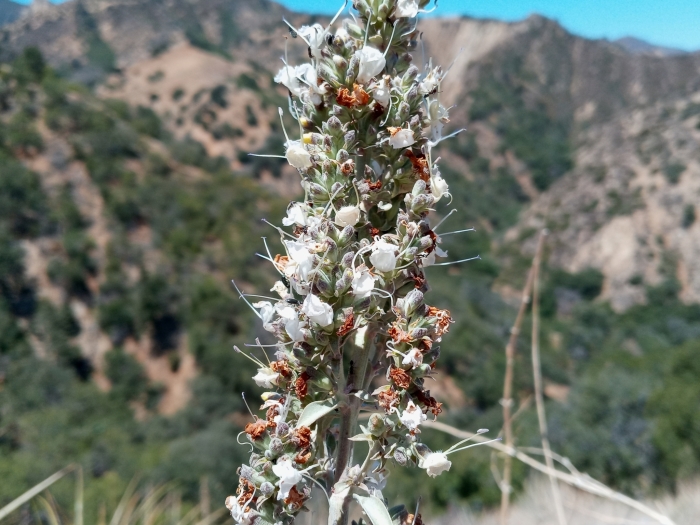White Sage
(Salvia apiana)
White Sage (Salvia apiana)
/
/

Daniel S.
CC BY 4.0












































































Estimated Native Range
Summary
White Sage is valued for its drought tolerance, aromatic foliage, and the striking contrast its pale leaves provide in the landscape. It is often used in xeriscaping, native plant gardens, and as a focal point in drought-tolerant landscapes. White Sage requires minimal maintenance once established, thriving in full sun with low water needs and well-draining soil. It is also popular for its purported medicinal properties and is frequently used in traditional smudging practices. However, gardeners should be aware that overharvesting in the wild for these purposes has led to conservation concerns. Cultivation should focus on sustainable practices, and it is advisable to source plants from reputable nurseries.CC BY-SA 4.0
Plant Description
- Plant Type: Shrub
- Height: 3-5 feet
- Width: 3-6 feet
- Growth Rate: Moderate
- Flower Color: White
- Flowering Season: Spring, Summer
- Leaf Retention: Evergreen
Growth Requirements
- Sun: Full Sun
- Water: Low
- Drainage: Fast
Common Uses
Bee Garden, Bird Garden, Butterfly Garden, Deer Resistant, Drought Tolerant, Edible*Disclaimer: Easyscape's listed plant edibility is for informational use. Always verify the safety and proper identification of any plant before consumption., Erosion Control, Fragrant, Groundcover, Hummingbird Garden, Low Maintenance, Rabbit Resistant, Rock Garden, Salt Tolerant, Showy Flowers
Natural Habitat
Coastal sage scrub and chaparral of Southern California and the northwestern part of Mexico
Other Names
Common Names: Bee Sage, Sacred Sage
Scientific Names: , Salvia apiana, Salvia apiana var. compacta, Audibertia polystachya, Ramona polystachya, Audibertiella polystachya, Salvia apiana var. typica,
GBIF Accepted Name: Salvia apiana Jeps.